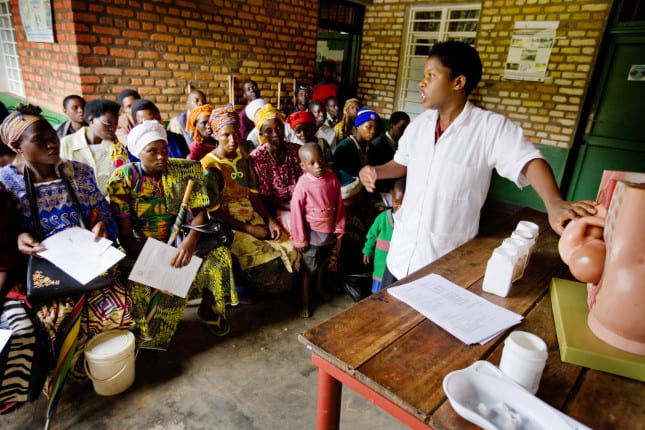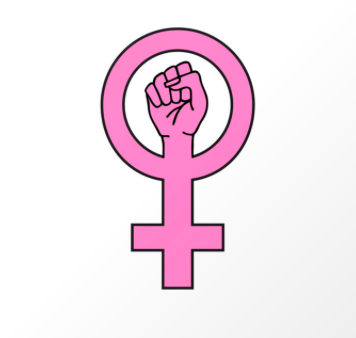
by ami31 | May 9, 2021 | Dashboard, Visualization
Childbirth is considered to be a landmark and joyous moment in any woman’s life. And although health experts say that no two childbirth experiences are the same, it is quite astounding that this can, in many cases, reach the extreme of death. According to statistics released by UNICEF, the World Health Organization (WHO), the United Nations Population Division, United Nations Population Fund (UNFPA) and the World Bank Group, around 2.8 million pregnant women and newborns die every year of preventable causes [1]. This turns childbirth into an event to be feared as it poses a significant threat to the lives of many women across the globe. According to the United Nations’ , quality education is defined as one the of the seventeen sustainable development goals (SDGs), so how can education help mitigate childbirth mortality?
“Pregnancy is not a disease. It should not lead to deaths. Every maternal death should be regarded as an abnormality.” – Vivianne Ihekweazu, Director of the Nigerian Health Watch [2]
How are Childbirth Deaths Related to Education?
The World Development Indicators data from the World Bank [3] allows us to look into the impact of education on childbirth by exploring the percentage of births that are handle by skilled health staff. In the figure below, we plot the average life expectancy at birth in years with respect to the average percentage of births attended by skilled staff for each country. There is a clear positive correlation between the two variables. We therefore conclude that children who are delivered by skilled health workers during labor are more likely to have a higher life expectancy.
However, the impact of having educated people overseeing child delivery does not stop here. Unfortunately, carrying out child delivery without proper understanding of the necessary health procedures has more alarming implications. In the dashboard below, we notice a sharp decrease in both maternal mortality (women dying during labor) and neonatal mortality (newborns dying at birth) in countries where more childbirths are handled by skilled health workers. This implies that many of the childbirth related deaths can be attributed to the lack of necessary health skills.
Where are these Childbirth Deaths Mostly Occurring?
Below we find the places that suffer the most from this by selecting the countries that have a below average percentage of births attended by skilled staff.
By looking at the geographical distribution of these countries we unsurprisingly find that the majority is located in Africa. Furthermore, we notice that the educational attainment in these countries is significantly lower than countries that have more professionally handled childbirths. This is an expected causality since to have more skilled people perform childbirth procedures we need more educated people.
So the Solution Is, Educate More People!
“The benefits of education permeate all walks of life right from the moment of birth.” – Irina Bokova, Director-General of UNESCO [4]
In light of the above, we clearly need to have more educated people that are able to professionally handle childbirth procedures. This is especially needed in developing countries where childbirth mortality is more pronounced. A key approach strategy here is to educate the local birth attendants and community midwives that are already active in these communities. These local and community health workers are already more connected to the women and families in their towns making their newly found skills more accessible and allowing them to spread health awareness to pregnant women in their communities [5]. Finally some communities in rural Africa are located in remote locations faraway from any medical supply and service centers. Therefore, setting up portable medical outposts near these towns would greatly enhance the quality of services provided by birth attendants.
References
[2] E. Onyeji, “Despite having highest maternal mortality in Africa, Nigeria’s situation still underreported – Report,”
Premium Times Nigeria, 03-Dec-2020. [Online]. Available:
https://www.premiumtimesng.com/news/headlines/429266-despite-having-highest-maternal-mortality-in-africa-nigerias-situation-still-underreported-report.html.
[3] https://datatopics.worldbank.org/world-development-indicators/
[4] “Education can save lives, help reach sustainable development goals – UN agency,”
UN News, 18-Sep-2014. [Online]. Available:
https://news.un.org/en/story/2014/09/477702-education-can-save-lives-help-reach-sustainable-development-goals-un-agency.
[5] D. Shikuku and C. Ameh, “Investing in midwifery training and education for improved maternal and newborn outcomes,”
On Medicine, 19-Mar-2021. [Online]. Available:
https://blogs.biomedcentral.com/on-medicine/2021/03/19/midwifery-training-education-maternal-newborn-outcomes-isrctn/.

by Ghida | May 5, 2020 | Dashboard, Visualization
Females in the Arab World are always faced with discriminatory situations in a ‘professional environment’. From personal questions in an interview to on-the-job obstacles, something always has to remind us of who we are and how anchored we are to it. It is not very different around the world, however, females have only recently started to break through the notions of the ‘working man’, proving that the only professional difference between them is inside the minds of those who believe it exists.
When I started exploring the World Development Indicators data on Tableau, I could not but stop at the Employment to Population Ratio. So I developed a dashboard visualized below.

As seen on the map, there are big differences in Female Employment to Population Ratios around the world. Looking deeper into the ratios of 2 adjacent but very different cultures, the European Union and Arab Countries – the line graphs to the right -, we can notice the difference in the gaps between female and male ratios. While the Male Employment to Population Ratio is almost the same across both areas, there is a big difference in the female’s numbers, of course affecting the total ratios.
I believe the needed change starts in education – not only that of little girls who need to be equipped by the time they can join the workforce, but also of societies to be welcoming, and supportive of those girls. Many forces enter in this journey, in many cases education is an unaffordable luxury, which is why the intrusion of governments and NGOs is highly needed.
The featured image is from Aptology.

by Mira Dannawi | May 5, 2020 | Visualization
As the World is today coping with the new virus COVID-19 that spread five months ago, leading to millions of deaths behind, it has been proven that health is the most important component on the human life, and that the existence of advanced, progressive and up to date health care and health centers are crucial for an efficient health assistance for a whole given nation. As such, I found in the World bank dataset some indicators that were efficient enough to picture the correlation between health expenditures and the lifetime of infants and adults.

We can spot how health expenditure per capita varies from region to region, leaving a considerable influence on life expectancy. In fact, Europe, that has the highest health expenditure(1,200,000 $), has the highest life expectancy recording 77 years. Africa that has 61,347$ expenditures, expects an average age for its population equal to 56 years. This is very logical since the absence of social welfare, health care, and the limited number of sanitarian and health centers prevents ill people from having their medical treatments’ needs, which therefore leads to their death. However, a third indicator was included which is the infant mortality rate that has a negative relationship with the health expenditure. We can notice that Europe has the lowest rate 0.7% compared to Africa that has 6.7% mortality rate among infants. Thus, we can conclude that Europe which has the highest health expenditures has the lowest infants mortality rate because of the provision of vaccinations, and frequent followups with doctors. Whereas, in Africa, where there are a lot of diseases, there is lack of medical personnel and machinery used to assess and diagnose ill children, or infected pregnant women.
Thus, the integration of technology in health and sanitarian sector and the presence of social welfare and well-prepared medical centers proved to have a positive relationship with the health and the lifetime of people, including children.

by Mira Dannawi | May 5, 2020 | Visualization
Being a woman has been a very difficult mission from the beginning of humanity till our days, as she faces a lot of obstacles from birth till death. Speaking as a woman and as a human, I consider that gender inequality is a personnel issue that every woman should stand against, asking for equal rights to men. Therefore, I searched for data that can best track the severity of this issue, and found the dataset of the World Bank about genders. Among a set of indicators, I found one indicator that can speak it all, which is the WBL index.
A WBL index is how much a woman scores as man i.e. how much there are laws that support her and treat her equally to men in all the stages of her life: marriage, employment, salary, inheritance, entrepreneurship… Therefore, WBL index is the average score of all these factors, where a score of 100 means that a woman has the same rights as a man. The less this index is, the less women are treated as men.
In this visual, one can see that Morocco has the highest WBL index among all the countries in Arab World, where it has scored 75.6 i.e. a woman in Morocco has three quarters of a man’s rights. Lebanon is lying in the middle, and has scored 52.5 meaning that a Lebanese woman has half the rights of a man. Jordan has the lowest WBL index where it has scored 40.6. However, I tended not to include Saudi Arabia’s status because of the contradicting sources defining its status, but noting that its position in gender equality has improved remarkably after the reforms taken by the government.

In order to reduce this gap between men and women, governments should update their laws to give equal rights for both genders, tackling all the previously mentioned factors: marriage, employment, salary… Moreover, children and parents should be educated that men and women are of equal importance and no gender is superior to the other, given the fact that humanity wouldn’t have continued to exist without the existence of both men and women. Thus, genders should be given equal rights.






